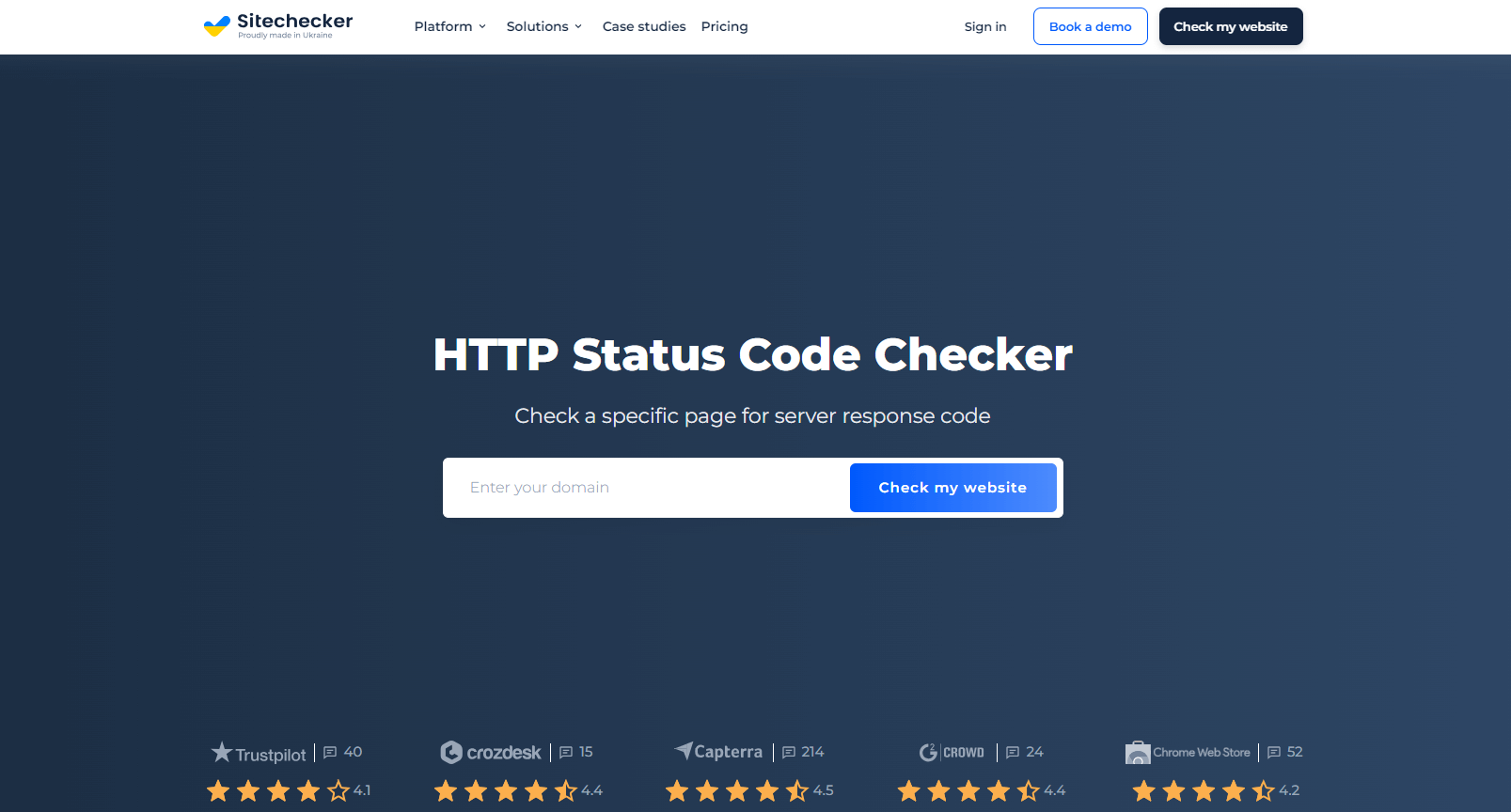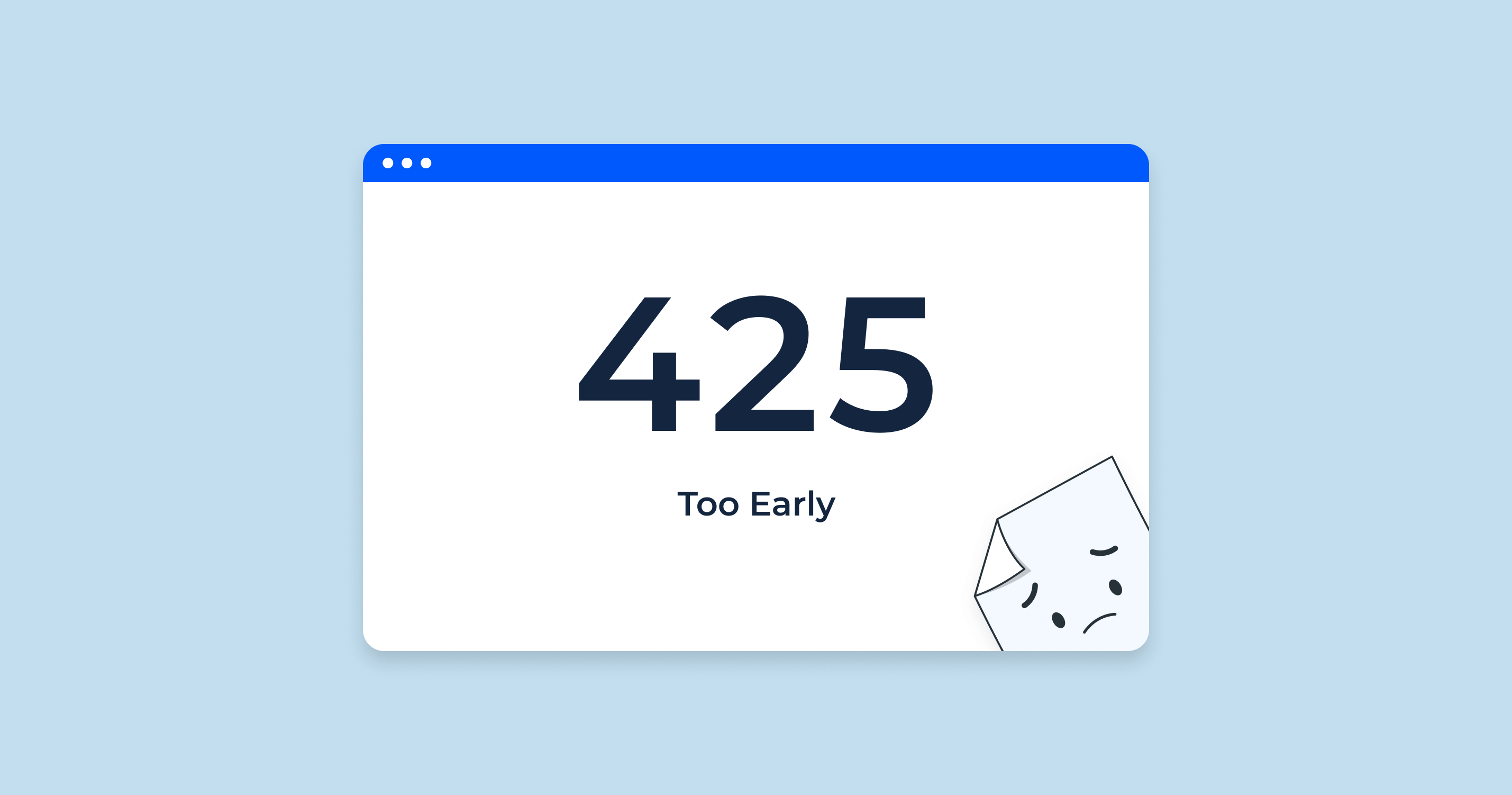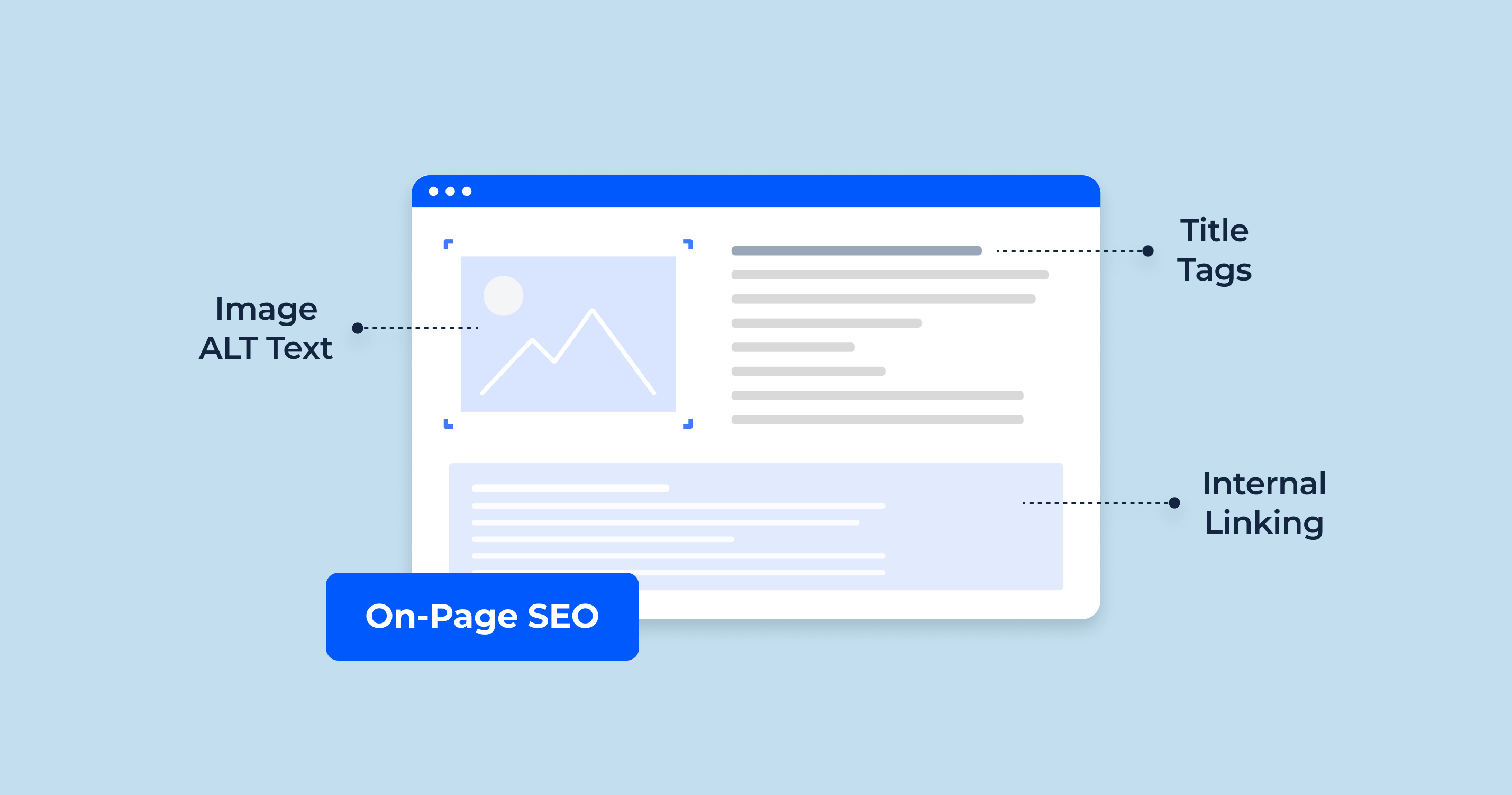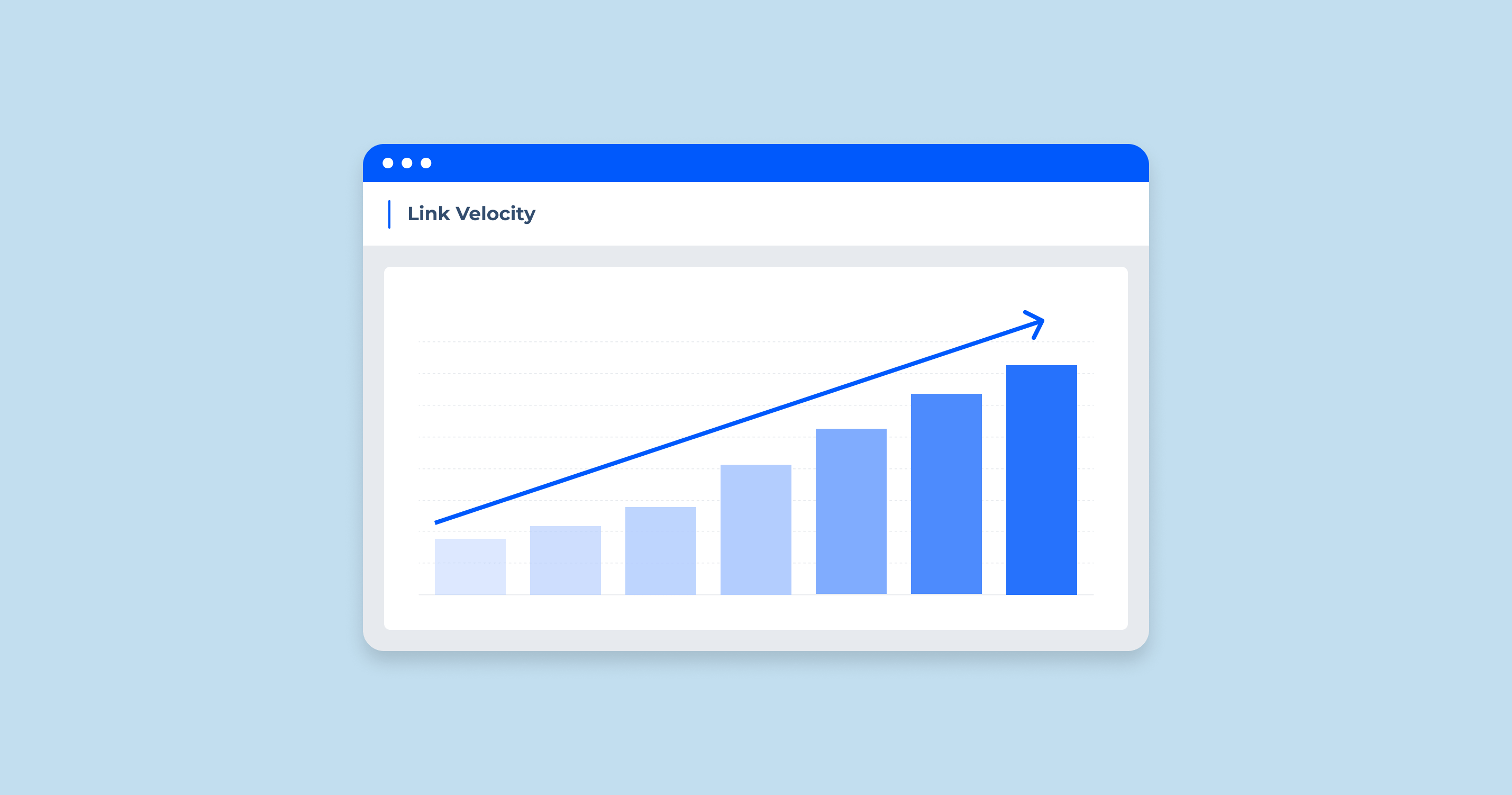What is the 425 Status Code?
HTTP status code 425 is defined as “Too Early.” This status code was introduced in HTTP/2 to prevent replay attacks, being generated when a server requires the client to retry the request later, usually in situations where the server has initiated a key update process.
It’s worth noting that its usage is quite uncommon and specific, and therefore its implications on SEO could be considered negligible or non-existent under typical circumstances. However, any HTTP status code indicating an unsuccessful HTTP request (like 4xx or 5xx) could potentially impact a website’s user experience. Therefore, indirectly affects its SEO performance.
Common Reasons for Encountering a 425 Status Code
The 425 “Too Early” status code is a relatively recent addition to HTTP, introduced in HTTP/2. The purpose of this status code is to inform the client that it is “too early” to retry a certain request. This could happen in a few scenarios, typically involving specific security considerations:
| Key Update In Process | In the context of HTTP/2, a 425 status code may be returned when the server has initiated a key update process. In such cases, the client might need to wait and resend its request at a later time. |
| Prevent Replay Attacks | The 425 status code is also designed to prevent replay attacks. A replay attack is a network attack in which valid data transmission is maliciously or fraudulently repeated or delayed. If the server detects that the request could lead to a potential replay attack, it might respond with a 425 status code to request the client to resend the request later. |
| Early Data Sent Over TLS | When a client tries to send early data over TLS (Transport Layer Security) while the server is not ready to handle it, the server might return a 425 status code. |
Please note that these are not typical scenarios for most web applications and websites. If you’re not specifically working with HTTP/2, key update processes, or early data in TLS, it’s unlikely you’ll encounter a 425 status code. If you do, it’s crucial to work closely with your server administrator or hosting provider to understand why this status code is being returned and how you can resolve it.
Because the 425 status code is not common and is usually linked with specific security measures, its impact on SEO is likely minimal, provided the issue causing it is promptly addressed. However, if a search engine bot continually receives a 425 status code when trying to crawl a page, it could potentially impact the accessibility of that page and, consequently, its SEO ranking.
The Impact of the 425 Status Code on SEO
Although HTTP status code 425 “Too Early” is a rare response typically associated with specific security processes, it could still have potential implications for SEO if not promptly addressed. This is because any HTTP response code indicating an unsuccessful HTTP request could indirectly affect SEO performance. Here’s a closer look at how a 425 status code might impact SEO:
| Crawling Issues | Search engine bots like Googlebot crawl websites by following links and making requests to servers. If a bot consistently encounters a 425 status code, it might have difficulty accessing and crawling the page in question. This could potentially lead to the page not being indexed, preventing it from appearing in search engine results. |
| User Experience | While a 425 status code is typically intended for server-client communication and isn’t something a user should usually see, consistent server issues could lead to poor user experience if pages fail to load as expected. User experience is a known ranking factor, and issues loading a page could increase bounce rates, decrease time spent on a page, and negatively impact other user experience metrics. |
| Website Reputation | If a website frequently returns 425 status codes, it might be seen as unreliable or unstable, which could negatively impact its reputation with both users and search engines. |
| Temporary vs Persistent Errors | If the 425 status code is a one-time or infrequent occurrence, it’s unlikely to have a significant impact on SEO. However, persistent issues that prevent the page from being accessed consistently could potentially lead to deindexing of the page. |
While these points outline potential impacts, it’s important to note that due to the specific and uncommon nature of the 425 status code, such impacts are not the norm and will depend greatly on the specific circumstances. Moreover, search engine algorithms are complex and consider a broad array of factors, of which HTTP status codes are just one small part.
If you are facing persistent 425 status codes on your website, it is recommended to engage a web developer or system administrator to investigate the issue. Resolving server issues promptly helps ensure that your website remains accessible and user-friendly, which is beneficial for SEO.
425 Status Code Common Issues and How to Fix Them
The HTTP status code 425, although relatively uncommon, is associated with specific security processes and can occasionally appear in certain server-client interactions. Here’s how to troubleshoot and resolve issues that may generate a 425 status code:
Key Update in Progress
The server may issue a 425 status code during a key update process in HTTP/2, requiring the client to resend its request at a later time.
Mitigating Replay Attacks
Status code 425 is designed to counter replay attacks, in which a valid data transmission is maliciously or fraudulently repeated or delayed.
Premature Data Transmission Over TLS
If a client sends early data over TLS (Transport Layer Security) before the server is ready to receive it, a 425 status code may be issued.
It’s important to note that these are general guidelines for troubleshooting a 425 status code. The exact solution may vary based on your particular situation. Hence, collaboration with a server administrator, hosting provider, or cybersecurity specialist is critical to address the issue adequately.
While rectifying these server issues, aim to provide an informative error page to users to maintain engagement and enhance user experience despite the server error.
HTTP Status Code Checker Tool for Identifying HTTP 425 Errors

Sitechecker Pro’s HTTP Status Code Checker is a robust tool for identifying HTTP status codes, including the 425 “Too Early” error. By simulating a search engine crawl, it provides a detailed report on your site’s pages, enabling quick identification and resolution of problematic status codes.
For 425 errors, Sitechecker Pro provides prompt alerts. With this timely information, you can take immediate steps to address the issue—be it adjusting server configuration or strengthening security protocols.
Beyond detection, Sitechecker Pro also aids in prevention. Regular checks help maintain site health and optimize user experience, contributing to strong SEO performance.
Conclusion
The HTTP 425 “Too Early” status code is an uncommon response related to security processes like key updates, replay attack prevention, and early data transmission over TLS. While infrequent, consistent 425 errors could indirectly affect SEO through crawling difficulties, poor user experience, and a hit to a site’s reputation.
Addressing 425 errors involves cooperation with server administrators to adjust server configurations or strengthen security protocols. Tools like Sitechecker Pro provide essential assistance by detecting and aiding in preventing these errors, supporting overall site health and SEO.









